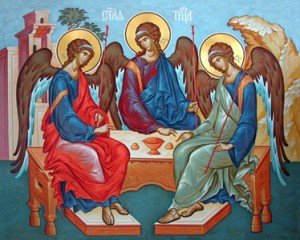 Absolutely critical to our understanding of Eastern spirituality is our acceptance of how the Fathers conceived the nature of humanity. This follows upon the thoughts I shared in the last issue of this article. The Eastern Fathers of the Church clearly set forth the notion that human beings are created in the image and likeness of God. This doctrine is central not only to their understanding of human nature, but also to their theology as a whole. A modern theologian has remarked:
Absolutely critical to our understanding of Eastern spirituality is our acceptance of how the Fathers conceived the nature of humanity. This follows upon the thoughts I shared in the last issue of this article. The Eastern Fathers of the Church clearly set forth the notion that human beings are created in the image and likeness of God. This doctrine is central not only to their understanding of human nature, but also to their theology as a whole. A modern theologian has remarked:
Now this theme of the image is, in the theology of the Fathers, above all the Greek Fathers, truly central: there one sees at the same time the meeting of Christology and Trinitarian theology, of anthropology and psychology, of the theology of creation and that of grace, of the problem of nature and the supernatural, the mystery of divinization, the theology of the spiritual life, the laws of its development and of its progress.
The foundation of the doctrine of the image is found, as I am sure all of my readers are aware, in the creation narrative of Genesis (Genesis 1:26-28a). However, in the rest of the Bible little is made of this doctrine. In chapter 5 of Genesis, the events of the creation of man are summarized: “In the day that God made Adam, he made him in the image of God; male and female he made them, and he blessed them”. In the New Testament we are told that Man (not woman) is ‘the image and glory of God’, but it is Christ, too, who is said to be the image of God. Language of the image is used of our relationship to Christ: we are to be ‘conformed to the image of his Son’.
So our Eastern spirituality calls us to seek out a true understanding of Who Christ is so that we might work to grow in our likeness of Him. This re-quires, however, that we re-frain trying to make God and Christ respond to life like we do but, rather, to discover how to respond to life as God does.
